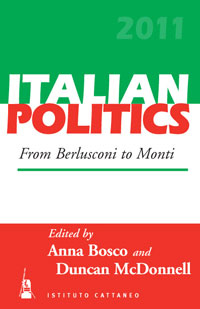
Series
Volume 27
Italian Politics
See Related
History JournalsEmail Newsletters
Sign up for our email newsletters to get customized updates on new Berghahn publications.
From Berlusconi to Monti
Edited by Anna Bosco and Duncan McDonnell
338 pages, 14 ills, 37 tables & graphs, bibliog., index
ISBN 978-1-78238-219-5 $59.95/£47.95 / Pb / Published (May 2013)
Description
In 2011, Silvio Berlusconi’s government fell amid a severe financial crisis that called into question the sustainability of Italy’s enormous public debt. But Italy’s entire political class suffered a downgrade at the hands of Europe, the markets, national elites, and many Italian citizens. From the beginning of 2011, the parties appeared weak and lacking in any vision, capable only of reacting poorly to events and interpreting them within the tired pro-/anti-Berlusconi frame that had dominated politics for two decades. Throughout the year, those shaping the key events came from outside the main parties: the president of the Republic, Giorgio Napolitano; the new president of the European Central Bank, Mario Draghi; the leader of Confindustria, Emma Marcegaglia; the new mayors of Milan and Naples; the promoters of the referendums in June; and, last but by no means least, the European Union, foreign leaders, and the markets. In November, the downgrade of Italy’s parties was made official by the installation of a technocratic government, led by Mario Monti. By the year’s end, it therefore seemed clear that while the Third Republic had not yet begun, the Second was breathing its last.
Anna Bosco is at the Faculty of Political Science at the University of Trieste
Duncan McDonnell is at the Department of Political and Social Sciences at the European University Institute in Florence.

